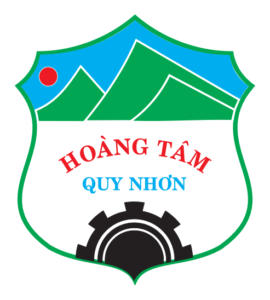The timber is a Light Hardwood with a density of 400-1,075 kg/m3 air dry. Nyatoh shows variable natural durability in accordance to the species. The majority of the species would fall into the moderately durable class but there are species that are non-durable as well as those which are durable.
The Standard Malaysian Name for the light and reddish timber of the family Sapotaceae. Vernacular names applied include nyatoh (Peninsular Malaysia, Sabah and Sarawak) with various epithets and also bengku (Peninsular Malaysia), ekor (Peninsular Malaysia), jangkar(Sarawak), mentua taban (Peninsular Malaysia), rian (Sarawak), semaram (Peninsular Malaysia), sundik (Peninsular Malaysia), taban (Peninsular Malaysia) and taban merah(Peninsular Malaysia). Major species of the timber include Madhuca curtisii, M. kingiana, M. motleyana, M. erythrophylla, M. laurifolia, M. longistyla, M. penicillata, M. sericea, M. sp. A, M. sp. B; Palaquium clarkeanum, P. gutta, P. hexandrum, P. hispidum, P. impressinervium, P. maingayi, P. microphyllum, P. obovatum, P. oxleyanum, P. regina-montium, P. rostratum, P. semaram, P. xanthochymum; Payena dasyphylla, P. lanceolata, P. maingayi and P. obscura. The sapwood is lighter in colour and is only moderately sharply differentiated from the heartwood, which is deep pink-red or red-brown.
Also known as Alakaak, Kalipaya, Long-leafed nato, Malak-malak, Maniknik, Mindanao nato, Nato, Nyatoh, Palak-palak, Red nato, Tagatoi and Tipurus(Philippines); Bauvudi (Fiji); Chik Nom, Chik-khao, Phikun-nok, Phikun-pa, Phikun-thuan and Tabun Dam (Thailand); Chonte, Nyatoh and Nyatuh(Indonesia); Chorni (Cambodia); Jambadung (Laos); Kanzwe (Myanmar); Kirihembiliya and Tawenna(Sri Lanka); Mahua (India); Nyatoh (Brunei); Pali and Tali(India); Pencil cedar (Papua New Guinea).
KILN-DRYING
Kiln Schedule E is recommended for the lighter species of nyatoh and 25 mm thick boards take approximately 11 days to kiln-dry. Heavier species should be kiln-dried using Schedule D or C.
Kiln Schedule C
|
Moisture Content (%) |
Temperature |
Temperature |
Relative Humidity (%) |
||
|
° F |
° C |
° F |
° C |
||
|
Green |
105 |
40.5 |
101 |
38.0 |
85 |
|
60 |
105 |
40.5 |
99 |
37.0 |
80 |
|
40 |
110 |
43.5 |
102 |
39.0 |
75 |
|
35 |
110 |
43.5 |
100 |
38.0 |
70 |
|
30 |
115 |
46.0 |
103 |
39.5 |
65 |
|
25 |
125 |
51.5 |
109 |
43.0 |
60 |
|
20 |
140 |
60.0 |
118 |
47.5 |
50 |
|
15 |
150 |
65.5 |
121 |
49.0 |
40 |
Kiln Schedule D
|
Moisture Content (%) |
Temperature (Dry Bulb) |
Temperature (Wet Bulb) |
Relative Humidity (%) (approx.) |
||
|
° F |
° C |
° F |
° C |
||
|
Green |
105 |
40.5 |
101 |
38.0 |
85 |
|
60 |
105 |
40.5 |
99 |
37.0 |
80 |
|
40 |
105 |
40.5 |
96 |
35.5 |
70 |
|
35 |
110 |
43.5 |
97 |
36.0 |
60 |
|
30 |
115 |
46.0 |
97 |
36.0 |
50 |
|
25 |
125 |
51.5 |
101 |
38.0 |
40 |
|
20 |
140 |
60.0 |
105 |
40.5 |
30 |
|
15 |
150 |
65.5 |
112 |
44.5 |
30 |
Kiln Schedule E
|
Moisture Content (%) |
Temperature (Dry Bulb) |
Temperature (Wet Bulb) |
Relative Humidity (%)(approx.) |
||
|
° F |
° C |
° F |
° C |
||
|
Green |
120 |
48.5 |
115 |
46.0 |
85 |
|
60 |
120 |
48.5 |
113 |
45.0 |
80 |
|
40 |
125 |
51.5 |
116 |
46.5 |
75 |
|
30 |
130 |
54.5 |
117 |
47.0 |
65 |
|
25 |
140 |
60.0 |
120 |
48.5 |
55 |
|
20 |
155 |
68.0 |
127 |
53.0 |
45 |
|
10 |
170 |
76.5 |
136 |
58.0 |
40 |
SHRINKAGE
The shrinkage of nyatoh is summarised below:
|
Species |
Shrinkage (%) |
Remarks |
|
|
Radial |
Tangential |
||
| Madhuca motleyana |
2.4 |
3 |
Fairly high shrinkage |
|
Palaquium gutta |
1 |
1.9 |
Fairly low shrinkage |
|
P. hispidum |
1.3 |
2.8 |
Fairly high shrinkage |
|
P. impressinervium |
3 |
3.6 |
High shrinkage |
|
P. maingayi |
2.3 |
4.3 |
Very high shrinkage |




























